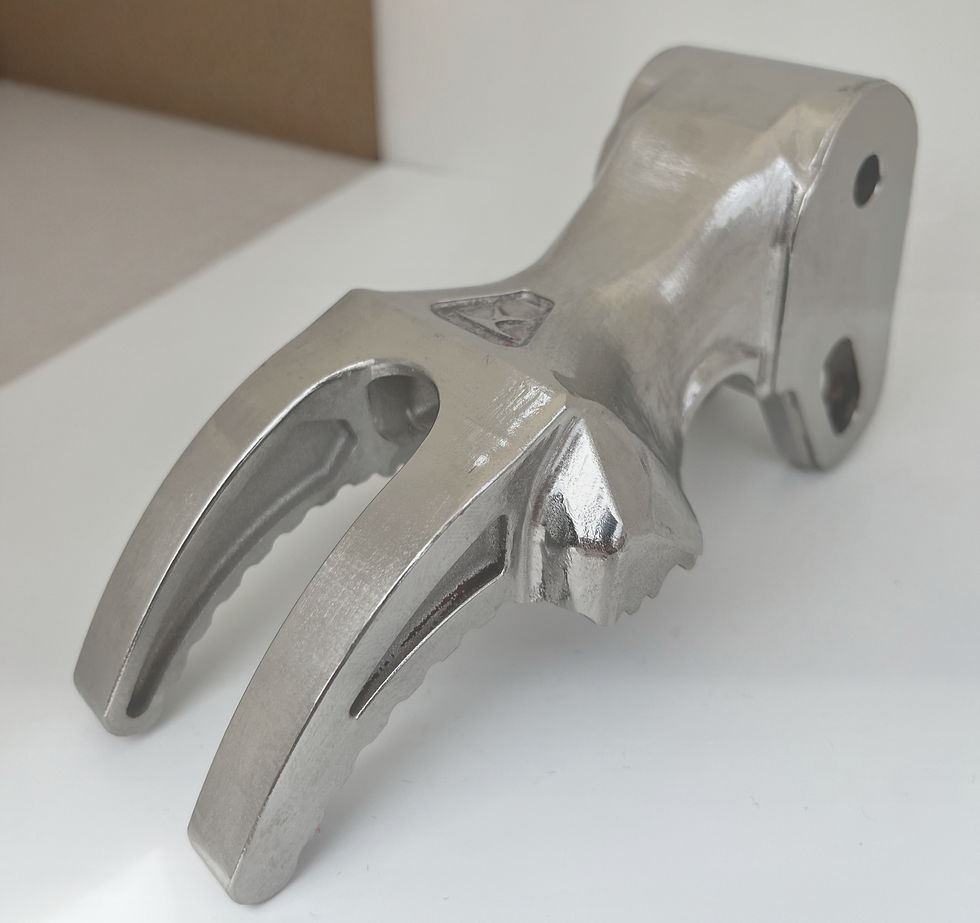❌ Common Mistakes When Designing for Additive Manufacturing (and How to Avoid Them)
- Alejandro Casal Lago
- Jul 14
- 2 min read
3D additive manufacturing —especially with technologies like HP Multi Jet Fusion (MJF) and Stereolithography (SLA)— allows for the production of complex, functional parts with fast turnaround times and excellent repeatability. But successful results start with proper design.
At Inmake, we often receive files that could work better with just a few tweaks. Here are the most common design mistakes we see and how you can avoid them in your next project.
1. Not Accounting for Proper Tolerances in Assemblies
Although MJF offers great dimensional accuracy, parts still have natural tolerances due to the process and material. Many designs feature tight fits without compensation, which can lead to parts not assembling correctly or unwanted looseness.
How to avoid it:
For clearance fits, allow 0.2–0.4 mm of space depending on geometry and surface.
For interference fits, you may need at least 0.1 mm of overlap, and ideally plan for post-processing such as drilling or reaming if precision is key.
Refer to ISO tolerance grades (IT) when high accuracy is needed.
2. Snap-Fits or Clip Features Not Optimized for 3D Printing
Snap-fit mechanisms work differently in additive manufacturing compared to injection molding. Incorrect designs may lead to part failure, loss of elasticity, or weak points.
How to avoid it:
Use L- or U-shaped cantilever designs with mounting angles of 35–40º, avoiding sharp inner corners.
Maintain a minimum base thickness of 1 mm, and round stress areas to reduce crack risk.
Keep engagement forces ideally below 50 N for reliable usability.
3. Ignoring the Effects of Post-Processing
Post-processing like sandblasting, polishing, or vibratory finishing can remove material and affect critical dimensions. This is especially relevant for moving parts or precision fits.
How to avoid it:
Design buffer zones or protective cages (sinter boxes) if tolerances are critical.
Request minimal or targeted finishing when necessary.
Know your material: PA12 from MJF responds well to media blasting but may shrink slightly.
4. Designing Walls Too Thin or Unsupported Structures
While MJF doesn't require support structures, very thin features or isolated elements can be weak or distorted.
How to avoid it:
Maintain a minimum wall thickness of 0.7–1 mm, depending on height and orientation.
Reinforce long walls or thin parts with ribs, fillets, or gussets.
Avoid long horizontal overhangs without structural anchoring.
5. Disregarding Layer Orientation and Z-Axis Strength
The direction of printing affects surface quality and mechanical performance. Poor orientation can lead to rough finishes, visible layers, or structural weaknesses.
How to avoid it:
Design with build direction in mind — for example, place flexible clips in the XY plane.
Orient key surfaces upward to minimize support and post-processing marks.
Ask your manufacturer how the part will be oriented and adjust design if needed.
🧠 Final Thoughts
Designing for additive manufacturing (DfAM) requires a different mindset than traditional methods like machining or injection molding. Each technology — MJF, SLA, or FDM — comes with its own strengths and limitations.
At Inmake, we provide design feedback before fabrication to ensure optimal performance and avoid costly reprints.




Comments